Gayle Irwin's Blog, page 29
June 17, 2015
Pet Ownership (Ir)Responsibility Affects Communities
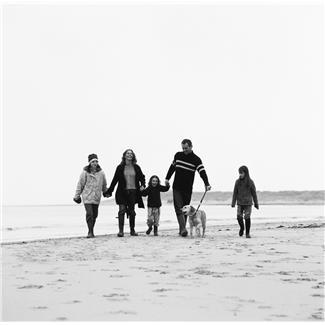 Experts estimate 60% of Americans own pets. Many people have more than one animal in their household. Having a pet is a major responsibility. Like children, dogs, cats, rabbits, hamsters, birds, and fish rely on a person (or two) to take care of them, to provide food, water, shelter, exercise, medical care, and time/attention.
Experts estimate 60% of Americans own pets. Many people have more than one animal in their household. Having a pet is a major responsibility. Like children, dogs, cats, rabbits, hamsters, birds, and fish rely on a person (or two) to take care of them, to provide food, water, shelter, exercise, medical care, and time/attention. What does it mean to be a responsible pet owner? A responsible pet owner ensures his/her pet has plenty of fresh water during all seasons of the year as well as good, nutritious food. Responsibility also includes adequate shelter throughout all seasons – warmth in winter, shade in summer, and protection against rain, wind and other elements all year. Vaccinations, spaying and neutering, and other medical care are also critical as is exercise. Pet owners also need to provide their animals with time and attention. Dogs especially need their owner's fondness and dedication; as pack animals, dogs respond and rely upon their people for attention and they desire human companionship. Cats, too, enjoy the company of their humans. Bringing a pet home and then ignoring it is not only irresponsible but it's also cruel. If you and your family are not ready to commit to having a pet, best not to get one until you can give the animal the time and care it needs.
Pet ownership responsibility also includes obeying a community's animal ordinances. Leash laws are in effect for several reasons, including the pet's safety and the safety of all community residents. Stray dogs and cats can create community hazards, and unaltered animals add to a community's abundance of dogs and cats. Pet overpopulation is rampant, as evidenced by the numbers of feral cats throughout the country. Feral, or community cats, are often unwelcome in towns even though they can curb rodent populations. Stray animals pose problems for community leaders and animal shelter personnel.
Animal welfare experts estimate that seven to eight million dogs, cats, puppies and kittens come into animal shelters annually around the United States. Nearly half of these animals are killed – that’s three to four million pets! Countless others are abandoned, left to fend for themselves – most often, these animals also die, from starvation, disease, attacks by other animals, or being run over by vehicles.
Pet ownership responsibility (or irresponsibility) affects not just pets, individuals, and families, but also communities. Pet overpopulation is just one issue, but it's a problem that can be solved – through responsibility. In summer, animal shelters and rescues are bombarded with litters of kittens and puppies. Abandoned and stray animals are also taken in. Animal shelters and rescue organizations become overwhelmed with the number of pets brought to them, both adults and youngsters. One way to help your community is through pet adoption – adoption is another way to be a responsible pet owner. Sadly, national statistics show that only 25% of people who add a pet to their home adopt from rescue organizations and animal shelters. We can change that statistic, and many others.
Together, we can make a greater impact upon our communities by being responsible pet owners, including adopting a next pet. June is National Adopt a Shelter Cat Month – consider adopting from your local shelter this month – you could be saving a life (or two).
Do all you can to be a responsible pet owner and positively impact your community … and teach the next generation that same value.
Published on June 17, 2015 15:33
May 27, 2015
Benefits of Dog Parks
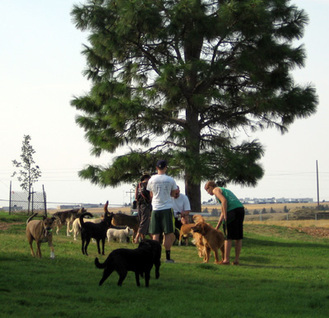 Last fall my community opened a fenced-in dog park, the first secured setting specifically for dogs and their humans in town. Although the community had a dog park for many years, it was not completely fenced, and therefore, not secure. In fact, the North Platte River runs next to the park and several dogs have drowned there.
Last fall my community opened a fenced-in dog park, the first secured setting specifically for dogs and their humans in town. Although the community had a dog park for many years, it was not completely fenced, and therefore, not secure. In fact, the North Platte River runs next to the park and several dogs have drowned there.Good for Residents and Visitors
Throughout the nation, dog parks are popular not only for community residents (two and four-footed), but also for visitors to those communities. For example, in Wyoming (the state in which I reside) next to the Cheyenne Animal Shelter is the Nancy Mockler Community Dog Park. This dog park provides highway travelers on I-80 or I-25 ability to rest and stretch their legs … and to provide the same for their traveling furry companions. Rock Springs, Wyoming has the Bitter Creek Bark Park off I-80. This fenced-in dog park includes a water feature and small lake, nice amenities on dry, hot days.
With more hotels becoming pet-friendly, having a dog park in the community is an added benefit for enticing travelers to choose to stop in that town. Having a dog park, especially a fenced-in one, is welcoming to travelers with dogs because people like knowing their dogs are safe. An enclosed park keeps dogs from running away and from running onto busy streets. And, if you're a visitor to a community, one of the last things you want to worry about is your dog being lost!
Socializing
Dog parks also provide socialization opportunities, again for both the dogs and their owners. While walking or playing with one's dog at a park, a person is likely to engage in conversation with other dog owners … and the dogs are apt to play with one another, running through the park or fetching a ball or other toy. Studies show people who have dogs are more outgoing and engage in more socializing because, well, like with our kids, we dog people like to talk about our furry family members!
Exercise
Having a dog park provides great opportunities for exercise for both canines and their humans. Getting outside with our dogs to walk, to run, to play, provides our dogs with activity they need for a healthier life … and gives us people exercise and better health as well. And, exercising with our dogs helps strengthen the bond we share with them.
Separate Spaces for Different Dogs
It's my hope my city leaders will create more fenced-in dog parks in our town, and I hope the next one will provide a separate area for older, less active, and/or special needs dogs. Billings, Montana, for example, provides two sections within one large dog park (total of eight acres in size!): one area for active and larger dogs, and a smaller area for the older, slower, more shy, and for disabled dogs. I have a 17-year-old, deaf, nearly blind cocker spaniel, and when we are in Billings, we take him to this portion of the park, while our energetic, eight-year-old springer spaniel rushes around the trees and rock formations alongside more agile labs, boxers, and mastiffs. Having these two separate areas works well for our furry family.
Find More Information
For your summer travels, find out where other community dog parks are located by visiting http://www.bringfido.com/attraction/ . You can also find pet-friendly hotel listings on this site.
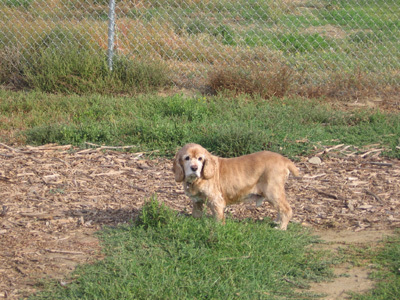
Published on May 27, 2015 19:24
May 13, 2015
Pesky Pests, O My!
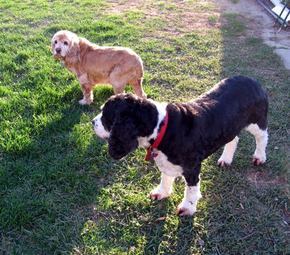 Spring weather can be wild and wacky, but one thing is for sure: warming weather means more time outdoors. But this better weather and outdoor time spring can also bring out nasty pests that harm our pets.
Spring weather can be wild and wacky, but one thing is for sure: warming weather means more time outdoors. But this better weather and outdoor time spring can also bring out nasty pests that harm our pets.Fleas and Ticks
Fleas and ticks can cause not just irritation but also great harm to our dogs and cats. According to Web MD, fleas, though tiny, can eat 15 times their own weight in blood, causing anemia in a dog or cat. At a minimum, fleas cause itching; they are known to be the most common cause of skin disease in dogs and cats. Ticks can bring Lyme disease and Rocky Mountain Spotted Fever not only to humans, but to our pets as well.
With warming weather, many of our animals spend more time outside. Running through grass, exploring the wonderful Wyoming forests, and encountering other pets while outdoors can bring your dog or cat into contact with fleas and ticks. And your pets can bring these pesky critters into your home. But, you can restrain that exposure.
Prevention
There are a myriad of preventive programs to curb these pests, and therefore, a pet parent's worry. Talk with your veterinarian about how to prevent fleas and ticks from infecting and affecting your dog or cat. You can purchase preventive measures from your vet directly or from a local pet supply store. You may also want to consult the Pet MD website for more information on fleas and ticks; the site includes a Flea and Tick Survival Guide: http://www.petmd.com/flea-tick-survival-guide#. Learn more about fleas and ticks and their affect on pets at http://pets.webmd.com/ss/slideshow-flea-and-tick-overview.
Flies and Mosquitoes
Fleas and ticks are not the only minute pests to be concerned about. Biting flies and gnats can be obnoxious to humans and their animals and may at times carry disease. Mosquitoes, too, not only pester people, but they also bother our animals. Fur provides some protection, but ears and noses are vulnerable. If you live near a water source or take your dog to your favorite fishing hole or to the lake, you should be concerned about mosquitoes and your pet. In fact, mosquitoes can carry West Nile Virus as well as heartworm, a major disease affecting dogs; cats can also get it. Although Wyoming is not typically a heartworm prevalent state, incidents have risen during the past decade, according to researchers (view heartworm incident maps at https://www.heartwormsociety.org/pet-owner-resources/incidence-maps).
Allergies
In addition to the diseases that our pets can obtain from fleas, ticks, and mosquitoes, dogs and cats can be allergic to these tiny problematic creatures. My springer/cocker mix, Mary, for example is allergic to many environmental objects, including grass, some trees, and mosquitoes. The only way my husband and I knew what allergies she has was to get her tested. Yes, it's an outlay of money, but we now know how best to help her and we know to protect her from mosquitoes. So, when we plan to travel to a moist, humid climate or to a lake or river, my husband and I make sure Mary is protected from mosquitoes.
Being outdoors during spring and summer is fun for us and for our pets, particularly our dogs. But remember there are tiny creatures out there just waiting for a warm body, ours and our pets, on which to inhabit. Therefore, take the needed precautions and purchase those preventative remedies to keep your pet from being infected by fleas, ticks, and mosquitoes. Talk with your veterinarian and keep your furry friend safe this season!
Published on May 13, 2015 12:56
April 27, 2015
Open the Floodgates of Kindness!
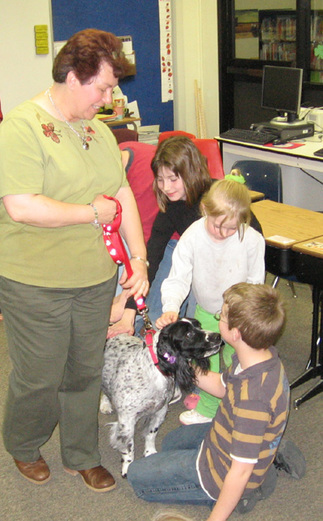 “Teach the children well,” are words in a song by Crosby, Stills and Nash (see the YouTube video at
https://www.youtube.com/watch?v=ztVaqZajq-I
). Teaching children kindness toward people and pets offers great rewards, including opportunity to do good in a community and opportunity for children to make new friends. In fact, according to a research study called Kindness Counts, “When kids performed acts of kindness or took notice of the pleasant places they visited, their happiness quotient increased ... (and) … they gained an average of 1.5 friends during the month-long period” (see related article at
http://www.rootsofaction.com/art-kindness-teaching-children-care/
).
“Teach the children well,” are words in a song by Crosby, Stills and Nash (see the YouTube video at
https://www.youtube.com/watch?v=ztVaqZajq-I
). Teaching children kindness toward people and pets offers great rewards, including opportunity to do good in a community and opportunity for children to make new friends. In fact, according to a research study called Kindness Counts, “When kids performed acts of kindness or took notice of the pleasant places they visited, their happiness quotient increased ... (and) … they gained an average of 1.5 friends during the month-long period” (see related article at
http://www.rootsofaction.com/art-kindness-teaching-children-care/
).The annual “Be Kind to Animals Week,” sponsored by the American Humane Association, is May 3 – 9, 2015. It's been 100 years since the creation of this specially-designated week. It's a week that provides parents, communities, and animal welfare organizations with opportunities to encourage kindness in children ... as well as adults.
Here are five ways to be kind to animals not only during this special week, but all throughout the year:
Take care of your own pets. Ensure your pets have clean water, plenty of food, shelter, and attention. Just like young children, our pets thrive from our caring, concern, devotion, and responsibility toward them. Children helping to care for the family pet learn responsibility as well as kindness.
Help pets in need. Volunteer at and/or donate to local or regional animal rescue and welfare organizations. These non-profits need the help and support of their community to do their job, and who is the community? All of us!
Another way to help animals in need is to create toys and other things for the shelter pets. Items such as fleece blanket beds and cat toys can help shelter animals while they are waiting for their forever homes. You and your family or classroom can also conduct a pet food drive and donate the items to the shelter and rescue groups in your area.
Don't tease, torment, abuse, or neglect animals and step in when you see this happening. Teasing animals makes them afraid and potentially aggressive, and it's against the law to abuse and neglect your pets.
Report animal abuse and neglect when you see it. There are laws to protect animals against abuse and neglect – be a humane hero and help end animal abuse. Many people who start of being abusive and violent to animals end up treating humans the same way.
You can also find more ideas about kindness to animals and helping to encourage that in children at the ASPCA (American Society for the Prevention of Cruelty to Animals) website: http://www.aspca.org/parents .
Open the floodgates of kindness toward pets and people during Be Kind to Animals Week and let it continue throughout your lifetime, teaching children empathy and compassion, and thereby impacting their lives -- and yours -- for the better.
Published on April 27, 2015 10:36
March 14, 2015
Spring into Exercise! Share Activities with Your Dog
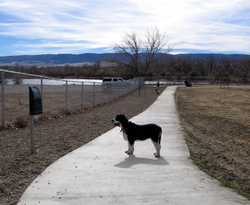 We’ve moved our clocks ahead and spring is set to start in about a week (March 20th). With the beautiful weather predicted for the Casper area this weekend (highs in the mid to upper 60s, the weather forecast says!), it’s a great time to get outdoors and exercise. And, when you do, take your dog along!
We’ve moved our clocks ahead and spring is set to start in about a week (March 20th). With the beautiful weather predicted for the Casper area this weekend (highs in the mid to upper 60s, the weather forecast says!), it’s a great time to get outdoors and exercise. And, when you do, take your dog along!Activities such as walking, jogging, and bike riding doesn’t have to be a solo adventure. Your dog, too, receives many physical and emotional benefits from activity, from sunshine and warm temperatures.
Casper has two dog parks now, one fenced-in and one open. Morad Park isn’t fenced so your dog isn’t safe from the flowing waters of the North Platte River, but there is more room for running. Lake McKenzie Dog Park, located off Bryan Stock Trail, is a two-acre completely fenced dog park that opened in November 2014. Here your dog isn’t as likely to jump (or fall) into the river but this park is smaller than Morad. However, there aren’t bike riders or joggers to deal with either. Whichever park you choose, you and your dog are apt to enjoy the outing, meeting other canines and their special persons and walking (or jogging) the trails.
Breathing clean, fresh air, relishing sunshine and warm temperatures on a Saturday or Sunday at the dog park is a wonderful experience for dogs and their owners. Socializing with others, be they human or canine, can also be a fun and engaging experience – who knows but that a solid friendship may just develop between dogs and/or people from a visit to the dog park?
Spending time on Casper Mountain, where it won’t be 60 degrees (but still a warm spring-like day at 7,000 to 8,000 feet in elevation) can also be a fun way to spend the weekend. Snowshoeing and cross country skiing with dog in tow again provides exercise for man and beast. Just make sure your dog is allowed in the area where you hope to be.
So, spring into exercise with your dog this weekend and feel healthier emotionally and physically … together!
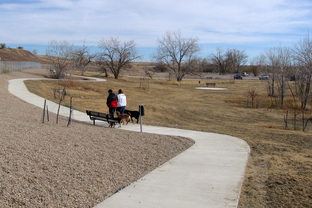
Published on March 14, 2015 19:47
March 1, 2015
Best in Show
 Beagles like this one and Miss P, who won Westminster's Best in Show in February, are popular family pets. Only two beagles have won Best in Show at Westminster, the dog show that often creates trends in dog ownership. Last month, in fact just a few weeks ago, Miss P, a 3-year-old, 15-inch beagle, won best in show at the annual Westminster Kennel Club Dog Show. This is the second time a beagle has been so crowned, the first being Uno in 2008, who is great-uncle to the newly-crowned Miss P.
Beagles like this one and Miss P, who won Westminster's Best in Show in February, are popular family pets. Only two beagles have won Best in Show at Westminster, the dog show that often creates trends in dog ownership. Last month, in fact just a few weeks ago, Miss P, a 3-year-old, 15-inch beagle, won best in show at the annual Westminster Kennel Club Dog Show. This is the second time a beagle has been so crowned, the first being Uno in 2008, who is great-uncle to the newly-crowned Miss P.I enjoy watching the Westminster Dog Show; there is a lot to be learned about the various dog breeds throughout the world. For example, beagles are scent hounds that have been used for hundreds of years to hunt rabbits and hares. They are considered friendly, curious, and happy dogs that make excellent pets for active families. The American Kennel Club (AKC) ranks beagles as the 5th most popular dog in America. After Miss P's win as Best in Show last month, if trend follows previous year's winner, beagles will jump in popularity. Therein, lies one of the primary concerns held by shelter and rescue workers. The Westminster Dog Show has a tendency to greatly influence the public. According to a blog post from Best Friends Animal Society, one of the most well-known and busy animal sanctuaries in America, “The breed of dog that wins Best in Show at Westminster quickly becomes the new popular dog of the minute. Many people looking for a pet will seek out a dog of the same breed as the show’s top winner.” Sales of puppy of that breed increase dramatically, and, according to the blog, “unfortunately, the sales all too often take place online or in pet stores, the main sales outlets where cruel, inhumane puppy mills deliver their 'product' to naïve customers who have no idea that their expensive new puppy came from a terrible place.”
There are reputable breeders. So, if you want to purchase from a breeder, ensure as best you can that it's a reputable one. Pets sold through pet stores and Craigslist or other such outlets should be be considered very warily; often these come from shady and shabby puppy mills.
Also, keep in mind that for each puppy brought through any breeder, one less is adopted from a shelter or rescue. Nearly 25 percent of dogs in shelters are purebred, and there are many rescue organizations that specialize in specific breeds. From Airedales to Yorkshire Terriers, breed rescues can be found throughout the country. For example, Basset Rescue of Montana is based in western Montana, and Montana German Shepherd and Belgium Malinois Rescue is also based in western Montana. Several websites can help you find a purebred dog (or cat). Montana Pets on the Net offers listings of adoptable animals, including purebred dogs and cats: http://www.montanapets.org/statewide/index.html . You can also search for a specific breed through the Petfinder pet adoption website: https://www.petfinder.com/breeds/ , and for a listing of various breed rescues, visit http://www.akc.org/dog-breeds/rescue-network/ .
Learning about a dog or cat breed prior to bringing one home is critical for both you and the pet. Make sure the animal's temperament and activity level meets your desires. For example, many dog breeds of the sporting, hound, and working groups require large amounts of activity, therefore, you will need to provide more than just a walk around the block for such dog breeds as Labradors, spaniels, beagles, greyhounds, German shepherds, and cattle dogs. Learn more about breeds of dogs at http://www.akc.org/find-a-match/compare-breeds/ and learn more about the various breeds of cats at http://www.animalplanet.com/breedselector/catselectorindex.do .
Published on March 01, 2015 14:04
February 16, 2015
Presidential Pets
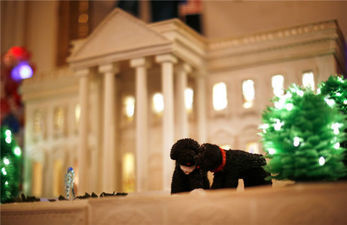 Current "first dogs" Bo and Sunny. Today is President's Day. In honor of our nation's leaders, I thought I'd give a briefing on the animals which made their home with America's first families. Those creatures have been as diverse as their humans, with representatives from various types and breeds.
Current "first dogs" Bo and Sunny. Today is President's Day. In honor of our nation's leaders, I thought I'd give a briefing on the animals which made their home with America's first families. Those creatures have been as diverse as their humans, with representatives from various types and breeds. Dogs:
The first “first dogs” were foxhounds. It’s been said the father of our country, George Washington, owned as many as 10, including one named Sweetlips!
James Buchanan, Ulysses Grant and Rutherford B. Hayes kept Newfoundlands at the White House.
Both Benjamin Harrison and Calvin Coolidge owned collies.
Teddy Roosevelt owned a variety of dogs, from small (Pekingese) to very large (St. Bernard).
Warren Harding’s Airedale, “Laddie Boy”, is still seen today thanks to a statue of the terrier in the Smithsonian.
Franklin Roosevelt’s Scottish Terrier, Fala, supposedly received more fan mail than most presidents. FDR had other dogs as well, including Irish Setters, a German Shepherd, a Great Dane, and a Bull Mastiff.
Scottish terriers seem to be a popular breed with American Presidents. Others who had Scotties at the White House include Dwight D. Eisenhower and George W. Bush, who had two: Barney and Beazley.
The first George Bush brought a Springer Spaniel named Millie to the White House. Millie even helped author a children’s book about herself! Millie had puppies while living in the famous Washington DC home, two of which lived at the White House with Presidents George 1 and George 2: Ranger and Spot, respectively.
Bill Clinton had his Chocolate Labrador Retriever buddy appropriately name Buddy.
Lyndon Johnson’s dog of choice was the beagle – he had three of them, named Him, Her, and Edgar! He received a lot of criticism when he lifted the dogs by their ears.
John F. Kennedy owned, not surprisingly, an Irish Wolfhound. He also had a Welsh terrier, an English Cocker Spaniel, and a German Shepherd.
Gerald Ford’s dog breed of choice was a Golden Retriever, appropriately named Liberty.
The current president, Barack Obama, and his family welcomed their first dog, Bo, a Portuguese Water Dog, not long after entering the White House themselves. The first family added a second PWD, named Sunny.
A previous Montana governor had a famous dog at the capitol: Jag, a border collie owned by Governor Brian Schweitzer. Like Millie Bush, Jag has a book about himself and his role as First Dog of Montana!
Other Animals:
The White House has been home for an array of other pets, including the Clintons’ cat, Socks, the Fords’ cat, Shan, and a multitude of hamsters, birds, even livestock, including a donkey owned by Coolidge, and lots of horses, including Bleistein, Teddy Roosevelt’s favorite horse.
The Kennedys were well noted for their menagerie, which included Caroline’s pony Macaroni, Sardar, Jacqueline’s horse, and a rabbit named Zsa Zsa.
Other presidents, such as Coolidge and Teddy Roosevelt, had an array of wildlife from America and abroad, including bears, opossums, raccoons, alligators, even a pygmy hippo!
Learn more about America’s presidents and their animal pals at the following websites:
http://presidentialpetmuseum.com/whitehousepets-1.htm
http://en.wikipedia.org/wiki/United_States_presidential_pets
HAPPY PRESIDENT'S DAY to all!
Published on February 16, 2015 07:47
January 20, 2015
Is There Such a Thing as 'No-Kill?'
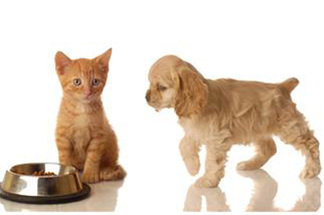 Pet rescue is alive and well – sadly and happily. Happily because there are caring people in the world who want to help animals in need; sadly because there is such great need.
Pet rescue is alive and well – sadly and happily. Happily because there are caring people in the world who want to help animals in need; sadly because there is such great need.There's a movement within pet rescue circles called “no kill” – the hope that no healthy, adoptable animals will be euthanized. Experts believe about 9,000 dogs and cats are killed every day in shelters across America, most of which are healthy and adoptable; that figure translates to about three million every year. Experts also estimate that only about 25 percent of people who bring a new pet into their home adopt from a shelter or rescue. Many respond to “free to a good home” ads, purchase animals from breeders, or go to pet stores, which often use unscrupulous breeders.
Two situations that attribute to the surplus of pets are (1) low adoption rates and (2) pet overpopulation (lots of litters). There are some groups, though, that believe pet overpopulation is a myth. Best Friends Animal Society in Utah, however, makes a strong case for the fact there is an over abundance of animals without homes. From a blog written in September, the co-founder of Best Friends states, “We should be as concerned about reducing the number of “noses in” (decreasing the number of pets entering shelters) as we are about increasing the number of “noses out” (by ramping up adoptions ...)” and “If we want to apply a supply and demand model to the business of no-kill, we should not only increase sales (adoptions), we should reduce production” (achieved through spay/neuter and other programs). Read the full blog at http://blogs.bestfriends.org/index.php/2014/09/08/is-pet-overpopulation-a-myth/
Resistance exists to some spay/neuter programs, such as the trap/neuter/release (TNR) of community/feral cats. Some people care nothing about these felines, even though most often “cat colonies” begin through the abandonment/dumping of house pets. As Mahatma Gandhi said, “The greatness of a nation can be judged by the way its animals are treated.”
February is known as spay/neuter month through a program called World Spay Day. There are a number of fine veterinarians as well as opportunities to engage with low-cost spay/neuter clinics, and there are vouchers for Casper area pet owners (visit http://www.cwsnf.org/ and http://animaladoptioncenter.org/spay-neuter/ for more information). If your pet needs the surgery, talk with your vet or visit the above websites to learn more. There are many health and other benefits of spay/neuter. Be part of the solution to advance our nation to no longer kill healthy, adoptable pets by reducing litters.
Interested in joining the No Kill movement? In addition to spaying/neutering your own pets and spreading the word about the benefits of those surgeries, you can also follow Best Friends on Facebook and Twitter and use hashtags #NoKill and #NoMoreHomelessPets. There are many other ways to be involved: (1) support other no-kill shelters and organizations; (2) help transport pets from kill shelters to rescues and other organizations that don't euthanize; and (3) educate others about how to prevent euthanization of healthy, adoptable pets. Also, adopt one yourself and/or encourage your family and friends to adopt. If you're looking for a purebred pet, more than 25% of those animals brought into shelters are purebred, and there are numerous rescue organizations that specialize in various breeds (ie, Springer Spaniel Rescue, King Charles Cavalier Rescue, Basset Rescue, etc – find them on the Internet).
We can all be part of the solution and help reduce the number of animals killed in this nation. Can we have a future of no-kill? Perhaps. I, for one, certainly hope so.
Published on January 20, 2015 15:35
December 23, 2014
Enjoy a Happy and Safe Christmas!
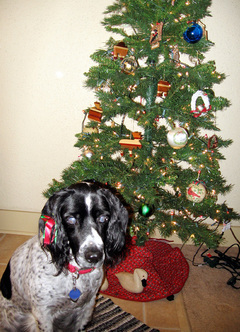 It's Christmastime. As people hurry and scurry this season, pets tend to be neglected and their safety often overlooked. Here are some tips to keep your furry companions safer during this busy time of year:
It's Christmastime. As people hurry and scurry this season, pets tend to be neglected and their safety often overlooked. Here are some tips to keep your furry companions safer during this busy time of year:Christmas decorations can cause issues for our animals. Garland and tinsel may be ingested, choking, even killing pets. Candles can be knocked over and cause a fire. When using decorations, choose those that pose less danger to your pet and household.
Cats can knock over Christmas trees from climbing into them or enticed by dangling decorations. If you use fragile tree decorations, keep those in the higher branches away from curious companions.
Make sure your pet always has fresh water in its dish so it’s not tempted to drink the water at the base of your live Christmas tree. Place a tree skirt around the tree to cover the water. Christmas tree water becomes dirty and stagnant, and pets that drink it can ingest bacteria and pine needles which drop, causing potential harm to your pet.
Secure and conceal all electrical outlets and connections. This protects not only your pets, but also small children who may visit or live in your home.
Some plants pose health hazards for pets, including mistletoe and poinsettia. Keep these out of your companion's reach or consider purchasing artificial ones.
The excitement, busyness, and stress we experience during the holidays can also stress our pets. Create a quiet place for your dog or cat to which they can go to get away from the commotion. Set up a room in the house away from the noise with familiar things such as your pet's bed, toys, and food and water dishes.
Follow these simple tips and your household will have a safer, more enjoyable Christmas season.
Published on December 23, 2014 10:36
December 5, 2014
Which Pet is the Right Pet?
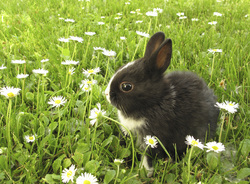 Every year, about seven million animals go into shelters and rescues across the country. Dogs, cats, rabbits, horses, guinea pigs, parakeets, and other animals come in as stray, are abandoned, or given up for various reasons. Nearly half of those that enter shelters are killed.
Every year, about seven million animals go into shelters and rescues across the country. Dogs, cats, rabbits, horses, guinea pigs, parakeets, and other animals come in as stray, are abandoned, or given up for various reasons. Nearly half of those that enter shelters are killed.For people seeking to adopt, there's a plethora of animals from which to choose and so the questions arise: Which breed? What type? Dog? Cat? Rabbit? Lizard? Parakeet? Fish?
How do you choose?
First, consider your lifestyle. Are you home a lot or gone? Are you an active person or a couch potato? Do you want an animal that needs to be with you a lot or one that's independent? Do you have time to walk and play with a pet?
Second, consider the allergy factor – does anyone in your family have allergies to pet hair/dander? Are you allergic to bird feathers? Even though many people with allergies have pets, it's also a big reason people turn animals into shelters and rescues. If you or someone in your house is severely allergic to animal hair/dander, then consider having a reptile, like a lizard or turtle, or a variety of fish for a beautiful aquarium.
Third, do you expect a life change in the near future, such as moving or having a baby? These are also main reasons people bring animals to the shelter. Keep in mind a pet is a major responsibility and should be a lifetime commitment. Dogs and cats in particular attach themselves to their human families, and it's very traumatic for them to go from living in a home to a shelter situation, behind bars, on cold concrete, amidst other barking dogs and meowing cats. Therefore, don't think of a pet as a temporary resident, but as a member of the family, and if you think you'll be making a major life change in the near future, postpone getting a pet until your life is more settled.
Fourth, research the different breeds of dogs and cats and the other types of animals people have for pets. Understand that terriers dig, beagles bay, corgis herd, cats claw, and longhaired felines need regular grooming. Most dogs and cats shed and bird and hamster cages need regular cleaning. Know what you're in for BEFORE you add a pet to your home and learn about the personality traits and habits of different breeds. Also recognize the needs of the various types of animals before you adopt.
Lastly, don't adopt on a whim. With the upcoming holiday season people are tempted to “gift” a dog, cat, kitten, puppy, hamster, rabbit, or other creature to their child, their family, their parent, even a friend. Remember the previous tips about understanding the needs of the animal and the responsibilities of pet ownership. Don't surprise someone and don't get an animal for yourself or your family without the knowledge base of which pet best fits your life. If you want to “gift” a pet, offer to pay the adoption fee for someone and let them choose the pet themselves. If you're considering giving your children the “gift” of a pet, keep in mind mom and dad are ultimately responsible for the care and cost of the pet... and even a “free pet” costs money for vet care, food, and other supplies … and pets take time, especially dogs. As a family, research the various types of pets and the different breeds of dogs and cats, and spend time together at the shelters and rescues to find the right animal that fits your family's lifestyle and personalities. A good opportunity to do that comes during Christmas break, when you can visit the facilities frequently and spend time with the various animals available for adoption … and you have the time after the holiday with your new family member before it's left alone when the kids return to school and you return to work.
The ASPCA (American Society for the Prevention of Cruelty to Animals) provides a list of pros and cons to adding a pet to your home. They offer tips and guidelines for those considering adopting a dog, a cat, a hamster, a guinea pig, a rabbit, or having a fish. View these tips, and other important pet information, at the organization's website: https://www.aspca.org/adopt/adoption-tips/right-pet-you .
So, which pet is the right one? The one that is right for you!
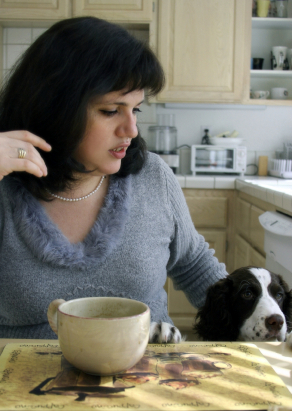
Published on December 05, 2014 08:56



